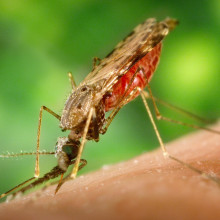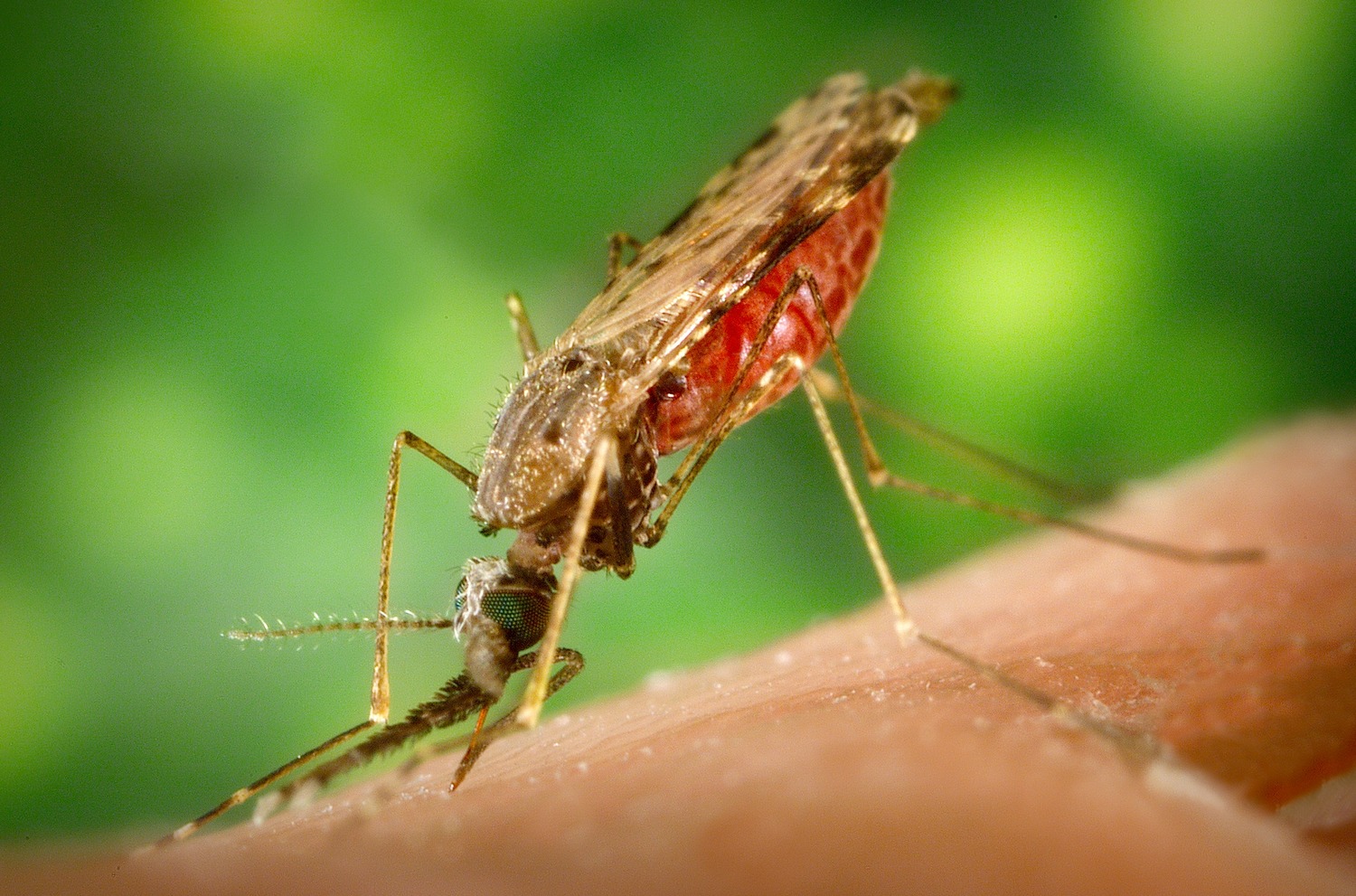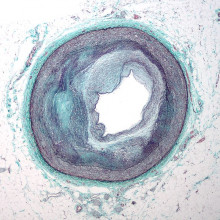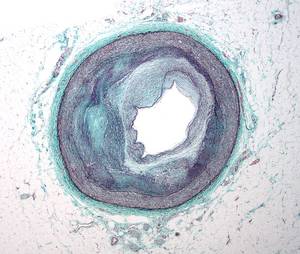This week, how a fetal genome can be sequenced before birth, how pregnant women protect their babies from immune attack and how rainfall can be used to map seasonal Malaria and improve drug treatment programmes. We also hear how stems cells could cause vascular disease, discover a digital way to improve reading for people with dyslexia and explore the colourful personality of the Gouldian Finch!
In this episode

00:17 - Baby's genome sequenced before birth from mother's blood
Baby's genome sequenced before birth from mother's blood
Using blood from a mother midway through her pregnancy, researchers have successfully sequenced the complete genome of the woman's unborn child.
Writing in the journal Science Translational Medicine, University of Washington, Seattle,  scientist Jay Shendure and his colleagues have published their approach to reading the genetic blueprint of a developing baby by piecing back together DNA fragments washing around in the maternal bloodstream.
scientist Jay Shendure and his colleagues have published their approach to reading the genetic blueprint of a developing baby by piecing back together DNA fragments washing around in the maternal bloodstream.
The approach, which according to Shendure cost about US$50,000 to complete, involved three separate phases of genetic sequencing.
First, DNA extracted from saliva samples was used to compile the complete genomic fingerprint of the father, while DNA from white cells in the mother's peripheral blood provided the maternal sequence. For the mother, the researchers also painstakingly decoded the DNA sequence from each of her 23 pairs of chromosomes - this is called the haplotype - so that they knew exactly what DNA sequences were sitting alongside one another.
The team then also sequenced the DNA contained in the cell-free plasma from the maternal blood sample; by this stage of pregnancy, over 10% of the DNA it contains is of foetal origin.
This produced a mixture of sequences, some of which were maternal, others foetal. But because the researchers knew the maternal sequence in detail, and what sequences were present in the father, it was possible to pick out and reassemble just the foetal DNA code. And this also meant that 39 new genetic changes (mutations) carried only by the developing baby were also predicted.
To check their results, the researchers matched up their sequences with the a version of the child's genome produced using a blood sample from the umbilical cord collected after the child was born.
The accuracy of the procedure was over 98%, meaning that it could be employed as a minimally invasive means of genetic screening without the miscarriage risks associated with amniocentesis or chorionic villus sampling tests currently employed.
And although the study used samples from 18 weeks' gestation, according to Shendure it should be possible to achieve the same results much earlier in pregnancy just by performing a greater number of sequencing reactions to compensate for lower circulating foetal DNA levels.
But it's not a fait-accomplit. "At the moment it's not practical, because it's a lot of effort to do the maternal haplotyping," explains Shendure. "But we're working on that."

03:36 - Silent genes protect 'foreign' foetuses
Silent genes protect 'foreign' foetuses
Never mind wearing unusual clothes or talking in incomprehensible slang, the feeling that your own child may be 'foreign' starts much younger than their teenage years, starting right back in the womb.  Because a developing fetus is made of cells bearing genes from both Mum and Dad, it should be recognised as a foreign invader by the mother's immune system and destroyed. The fact that is isn't has been a mystery to developmental biologists for many decades. But now new results in the journal Science from Adrian Erlebacher and his team at the New York University School of Medicine have finally revealed how a fetus is protected from this potentially deadly attack. Their findings could not only help to explain what happens when some pregnancies fail, but could even be extended to improving organ transplants or a treating much more undesirable growth, namely cancer.
Because a developing fetus is made of cells bearing genes from both Mum and Dad, it should be recognised as a foreign invader by the mother's immune system and destroyed. The fact that is isn't has been a mystery to developmental biologists for many decades. But now new results in the journal Science from Adrian Erlebacher and his team at the New York University School of Medicine have finally revealed how a fetus is protected from this potentially deadly attack. Their findings could not only help to explain what happens when some pregnancies fail, but could even be extended to improving organ transplants or a treating much more undesirable growth, namely cancer.
Normally, when our body detects something foreign, such as a transplanted organ, it starts an inflammatory reaction around the invader, producing signalling molecules called chemokines. These chemokines attract deadly immune cells called T-cells, which set about attacking and destroying the foreign tissue. This is why it's so important that transplant patients take drugs that suppress their immune system.
To find out why a mother's body doesn't label her baby as foreign, the scientists turned their attention to a structure called the decidua - the specialised 'barrier' tissue that encapsulated both the developing fetus and its placenta, using mice as a model system. They discovered that chemokine genes had been switched off in the decidua, using a kind of chemical 'tagging' known as epigenetic modifications, so killer T-cells weren't recruited there. This immunological 'dead zone' means that the fetus is protected from immune attack as it grows.
At the moment this research has only been done in mice, so the scientists need to confirm whether the same gene silencing is at work in humans. But if it is, there could be big implications for our understanding of why some pregnancies fail, or even why some women give birth prematurely or suffer complications such as pre-eclampsia.
The major problem with cancer is that it starts from our own cells, so it's hard for our immune system to recognise and destroy tumour cells. It may be the case that a similar mechanism that protects a developing fetus from immune attack is also helping cancers to avoid destruction, but obviously this needs to be investigated. The results from this research could also open doors in other areas, including organ transplantation and autoimmune diseases, so it will be very exciting to see where it leads in the future.

06:16 - Mapping Seasonal Malaria
Mapping Seasonal Malaria
Matt Cairns, London Scool of hygiene and Tropical Medicine
Also this week, scientists at the London School of Hygiene and Tropical Medicine have developed a new tool that can help them to identify the parts of Africa that are most likely to be susceptible to epidemics of malaria. Knowing where these places are means that efforts to prevent malaria can be concentrated on just these disease hotspots which will save money and thousands of lives. Matt Cairns led this study...
Matt - So Malaria is one of the biggest killers in Africa, particularly in pregnant women and children under 5 years of age. Current estimates from the World Health Organisation suggest there are 170 million malaria cases and perhaps 600,000 deaths in Africa each year, so it's a really big problem.
Chris - So, given that burden of disease, how could we intervene in order to try to reduce those numbers?
 Matt - What we looked at was a new strategy called 'Seasonal Malaria Chemoprevention', or SMC, which involves giving all children under the age of five a 3-day course of anti-malarial drugs, once per month during the rainy season. Where this approach has been used, it's worked very well and prevented around 8 out of every 10 malaria cases, and importantly, a similar number of the severe malaria cases where children actually need to be admitted to a hospital. But to move from research to the real world, we need to know how widely this can be used. So in this study, our aim was to identify the areas of Africa where this approach could be useful. By identifying the parts of Africa, where most of the malaria cases occur within a few months of the year, we can understand where this approach of giving monthly courses of drugs for 3 or 4 months would be most effective.
Matt - What we looked at was a new strategy called 'Seasonal Malaria Chemoprevention', or SMC, which involves giving all children under the age of five a 3-day course of anti-malarial drugs, once per month during the rainy season. Where this approach has been used, it's worked very well and prevented around 8 out of every 10 malaria cases, and importantly, a similar number of the severe malaria cases where children actually need to be admitted to a hospital. But to move from research to the real world, we need to know how widely this can be used. So in this study, our aim was to identify the areas of Africa where this approach could be useful. By identifying the parts of Africa, where most of the malaria cases occur within a few months of the year, we can understand where this approach of giving monthly courses of drugs for 3 or 4 months would be most effective.
Chris - Because it's critical that you know where there is a fairly constrained disease activity zone because then it means you can put your resources in there in an efficient way. If it's spread out fairly diffusely over a very large area with a not very tight peak of disease activity, it must be much harder to intervene.
Matt - Exactly, and so, the problem we're trying to overcome is that for large parts of Africa, we don't actually have reliable information on the pattern of malaria over the course of the year. But we found that the areas where most malaria cases occur within a few months tend to have quite a distinctive rainfall pattern. And in these places, most of the annual rainfall actually falls within 2 or 3 months and that's because the mosquitoes that transmit malaria rely on standing water to breed. So, in areas where there's a short rainy season followed by a long dry season, mosquitoes are only found in large numbers for a few months. So we realised that we could use rainfall to understand what the pattern of malaria cases over the year would be like in areas where we didn't actually have that information, and we were then able to use information on rainfall which is available for all of Africa to map the areas where the pattern of malaria cases is likely to be suitable for this seasonal drug-based prevention.
Chris - What about the problem of resistance though because that's a major issue with antimalarials, isn't it?
Matt - Yes. So, in the areas where this is currently going to be used, there's very little resistance to the two drugs that are planned to be used which is sulfadoxine pyrimethamine combined with amodiaqine, and in most of west Africa, those drugs remain very effective, and so that's why those drugs have been chosen to be used in this strategy.
Chris - Based on this analysis, what area is amenable to this kind of intervention, where you go in with the drugs, and therefore how many people could it impact? How many malaria cases and therefore lives could you prevent being lost?
Matt - We identified two areas of Africa, first of all, the Sahel and Sub Sahel which is a wide belt that extends from Gambia and Senegal in West Africa, all the way across the parts of Sudan in the east, and that belt actually contains some of the areas with the highest number of malaria cases in all of Africa. And secondly, according to the rainfall patterns, there's another quite large area of southern and eastern Africa that might be suited to this approach, and that was not widely recognised before we conducted our research, and is something we're trying to look at in more detail. In terms of the effectiveness, we identified that about 40 million children live in areas where this could be appropriate and about 25 million of those are in the Sahel and Sub Sahel belts where the malaria burden is very high indeed. And in terms of the actual impact, we tried to be realistic rather than optimistic about the number of cases and deaths that will be prevented. So, for example, we assumed that if the drugs were available, not every child would necessarily receive the medication every month, and we also tried to err on the side of caution regarding the effectiveness of the drugs. But even with our cautious approach, we still found that you might be able to prevent 10 million cases of malaria and 50,000 deaths every year. So it's really exciting, the potential impact of this new approach.
Chris - Can poor countries afford this intervention strategy though?
Matt - Yes, the drugs themselves are not expensive and actually, to treat a child for three or four courses over the year will cost something in the order of $1.5 to $2, so it's not expensive. The countries may need some support to begin doing this from the global funds to fight AIDS, TB and malaria or the U.S. President's Malaria Initiative. The costs involved are not particularly large and certainly, when compared with other malaria control tools, this is a reasonable value thing to do.
Chris - And lastly, Matt, it's all very well if we keep shovelling the money in to help these people, but what about if there's another economic downturn, things get even tighter and people say, "We can't afford to keep supporting this." So they don't put the money in. What then happens to the people who have had their malaria prevented at a young age by your strategy and they then turn into adults with malaria? Is there not a danger they could get worse disease and the mortality rate could rebound and be even higher?
Matt - So that's something that's been looked at carefully in the studies that have happened to date. Although that is something that does obviously need continuous monitoring because most of the research studies have been over this space of, at most, 3 or 4 years. So there is a concern if this is done over a very long period, it could be problematic. But those concerns are also raised for insecticide treated nets because it's really a similar idea that you'd be reducing the amount of exposure that children have had. And quite long-term follow up of trials of insecticide treated nets showed that actually, although there may be a slight increase in the malaria that adults or older children experience, it's massively outweighed by the malaria you prevent in childhood. So the cost-benefit analysis still comes down in favour of using these preventive approaches.

12:52 - Rewriting arterial disease
Rewriting arterial disease
An overlooked cell lurking in the walls of arteries could be the cause of the vascular disease that leads to heart attacks and strokes, new research has  revealed.
revealed.
Writing in Nature Communications, University of California, Berkeley scientist Zhenyu Tang and his colleagues show that a previously-ignored form of stem cell, which they dub the MVSC - multipotent vascular stem cell, may be the smoking gun behind the artery-furring process of atherosclerosis.
Prior to now, scientists had believed that, in response to injury to the inner lining of a blood vessel by factors such as diabetes, smoking or high blood pressure, the smooth muscle cells that form a circulate coat around the vessel begin to proliferate, forming a bulge that slowly blocks the artery.
But when Tang and his team used a range of chemical markers to examine the features of the cells present in the walls of arteries and veins they found a small population of non-muscle cells hiding amongst the muscle.
These cells, they found, show all the signs of being stem cells capable of producing a raft of different tissue types, including even bone, nerve-supporting cells and cartilage. And when they made injuries in vessels in experimental animals, the team found that in fact these stem cells were the ones that were proliferating and producing the artery-blocking bulges that characterise patches of atheroma.
The stem cells were probably overlooked before, the team speculate, because they also produce new muscle cells so when researchers had examined artery specimens in the past and seen proliferations of muscle they concluded that the muscle itself must be responsible.
The discovery of these MVSCs, which, critically, are also present in human arteries, could open the door to a range of new approaches to better managing arterial disease and may explain a host of vascular pathologies, including, given their preponderance to turn into bone cells, the calcifications that characterise some vascular lesions.

15:00 - Smart Water Pumps and the Colourful Personality of Birds
Smart Water Pumps and the Colourful Personality of Birds
Johan Auwerx, Ecole Pytechnique de Federale; Patrick Thomson, University of Oxford; Marco Zorzi, University of Padua; Claudia Metke-Hoffman, Liverpool John Moore's University
Milking away Obesity
A protein found in milk can keep obesity and diabetes at bay, as well as improve physical endurance.
When given to mice on a high fat diet, the protein nicotinamide riboside was found to prevent weight gain and type II diabetes by entering cells and increasing the activity of mitochondria - the powerhouses of the cell - to improve metabolism.
The protein could one day become a supplement but as it is found in a range of foods as well as milk, including bread and beer, a varied diet holds the key until then.
Johan Auwerx from the Ecole Polytechnique de Federale lead the work published in Science.
---
'Smart' Wat er Pumps
er Pumps
Mobile phones are being used to improve water supplies in rural Africa, according to research in the journal of hydroinformatics.
Patrick Thomson from the University of Oxford developed 'smart' water pumps containing data transmitters that use the increasing access to mobile networks now available across Africa to send out text messages when a pump breaks down.
The technology uses the movement of a pump's handle to estimate its water flow with data sent back to a central office when this flow is impaired to arrange for its repair with 70 being introduced in Kenya later this year.
---
Improving Reading abilities in Dyslexia
Increasing the spacing between letters significantly improves the readings skills of people with dyslexia.
Writing in the journal PNAS, Marco Zorzi from the University of Padua asked 94 French and Italian children with dyslexia to read pieces of text with both standard and double spaced wording and found that widened spacing doubled the accuracy of their reading and increased their reading speed by 20%.
The team suggest the spacing overcomes the problem of 'crowding' where letters are closely surrounded by other letters, making them harder to identify.
---
A colourful personality
And finally, the personality of a Gouldian finch can be predicted by the colour of its head.
Three aspects of personality were measured in 40 of these endangered Australian birds in the wild - risk-taking, aggression and boldness by exposing them to unfamiliar objects, silhouettes of predator birds and limited access to food.
The team, led by Claudia Mettke-Hofman from Liverpool John Moore's University found that Finches with red heads tended to show more aggression to access food whilst those with black heads were more bold and risk-taking.
And that work was published this week in the journal Animal Behaviour.










Comments
Add a comment